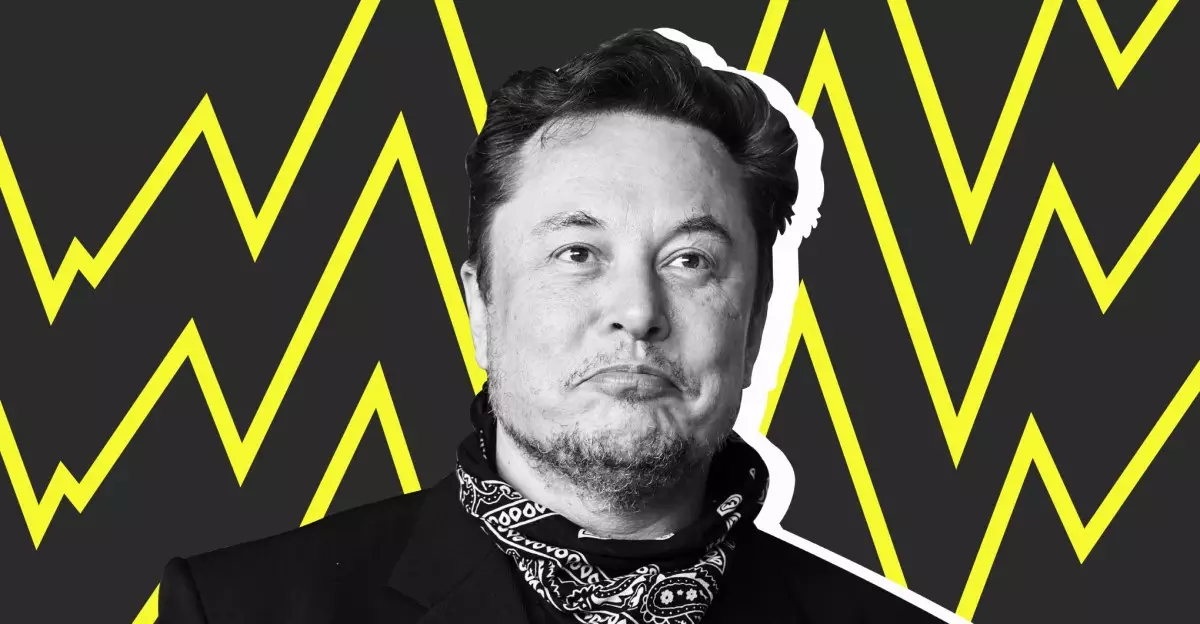The race for dominance in artificial intelligence has taken a thrilling turn, particularly with Elon Musk’s AI venture, xAI, launching its Grok-3 model. In a short span, this new AI has climbed to the top of the chatbot leaderboard, nudging out competitors and prompting comparisons with established giants like ChatGPT. As Musk continues to navigate personal and professional challenges, his AI team is making remarkable strides that can’t be overlooked.
xAI’s Grok-3 is not just another entry in a crowded field; it represents an accelerated innovation cycle that has left industry watchers both astounded and intrigued. Within weeks of its launch, Grok-3 has gained traction on platforms like the App Store, where it outperformed ChatGPT in popularity. Musk’s strategy seems clear: to not only create a technically advanced model but also to amplify its presence in the market rapidly. Unlike many of its predecessors, which spent years refining their algorithms and user interfaces, xAI has released Grok-3 after an impressively short development period. This rapid evolution is backed by an intensive focus on user experience, vital for capturing a broad audience in the competitive AI landscape.
Although Grok-3’s launch has showcased its capabilities, the real test lies in building a robust user base. The chatbot’s quick ascent suggests that Musk is keenly aware of how crucial user engagement is to sustain success and dethrone OpenAI’s ChatGPT. ChatGPT recently claimed a milestone of 400 million weekly active users, a staggering statistic that sets a high bar for any newcomer. Musk’s approach appears focused on diversifying his product offerings and enhancing user interaction, as he hinted at expanding capabilities to voice interactions and desktop applications.
By not only focusing on algorithmic advancement but also imaging wider applications for Grok-3, Musk seems to be wading into territory where usability could dictate success. The potential for integration into everyday technologies and platforms might be the very strategy needed to rival ChatGPT’s entrenched user base.
What sets xAI apart from its competitors is its intention to venture into realms not yet fully explored, such as AI-generated gaming. While details on this endeavor are still vague, the prospect could attract an audience eager for innovative applications of AI technology. Such differentiation in product roadmap direction could provide the needed edge over OpenAI, which is focused primarily on providing advanced conversational AI solutions.
Musk’s vision, reflected in xAI’s strategies, extends beyond mere chatbot functionalities. This approach may draw in users who want more dynamic and multifaceted interactions within the AI ecosystem. As highlighted by AI researcher Andrej Karpathy, Grok-3 is already competing closely with existing models in its “thinking” capabilities, suggesting that innovation is occurring at breakneck speed.
Given the rapid developments, it is not surprising that OpenAI remains vigilant. The disclosure of its user figures indicates an acknowledgement of rising competition, and its response is critical. Maintaining momentum while under pressure to innovate continuously is necessary if OpenAI hopes to safeguard its leading position. The rise of Musk’s xAI and the surging popularity of Grok-3 could compel OpenAI to reassess its strategies to maintain relevance.
Additionally, the tech industry itself has been responding to shifts in personnel and focus, as other companies adjust their strategies in light of Musk’s emerging AI presence. With leaders at companies like Meta changing roles or stepping down amid layoffs, the competitive landscape feels particularly volatile. Innovation is no longer just a push from tech giants; individuals and smaller startups are actively reshaping the future of AI.
The Future of AI Competition
As Grok-3 gains traction, new questions arise about the implications for users and the broader market. If Musk can successfully leverage Grok-3’s early momentum into sustained growth, the entire AI landscape may experience a seismic shift. The race between xAI and OpenAI could redefine engagement metrics, user expectations, and the very frameworks within which AI technologies develop.
More than merely a contest of capabilities, this competition encapsulates distinct visions for the future of AI. Musk’s approach hints at a more integrated, gaming-oriented future, while OpenAI seems poised to continue its focus on conversational excellence. How these paths will intersect, diverge or even collaborate in the coming months remains an open question laden with potential and uncertainty.
With AI’s capabilities continually improving and demand from users growing, the exploits of xAI could well serve as a harbinger for the next phase of innovation and competition in the digital era.

